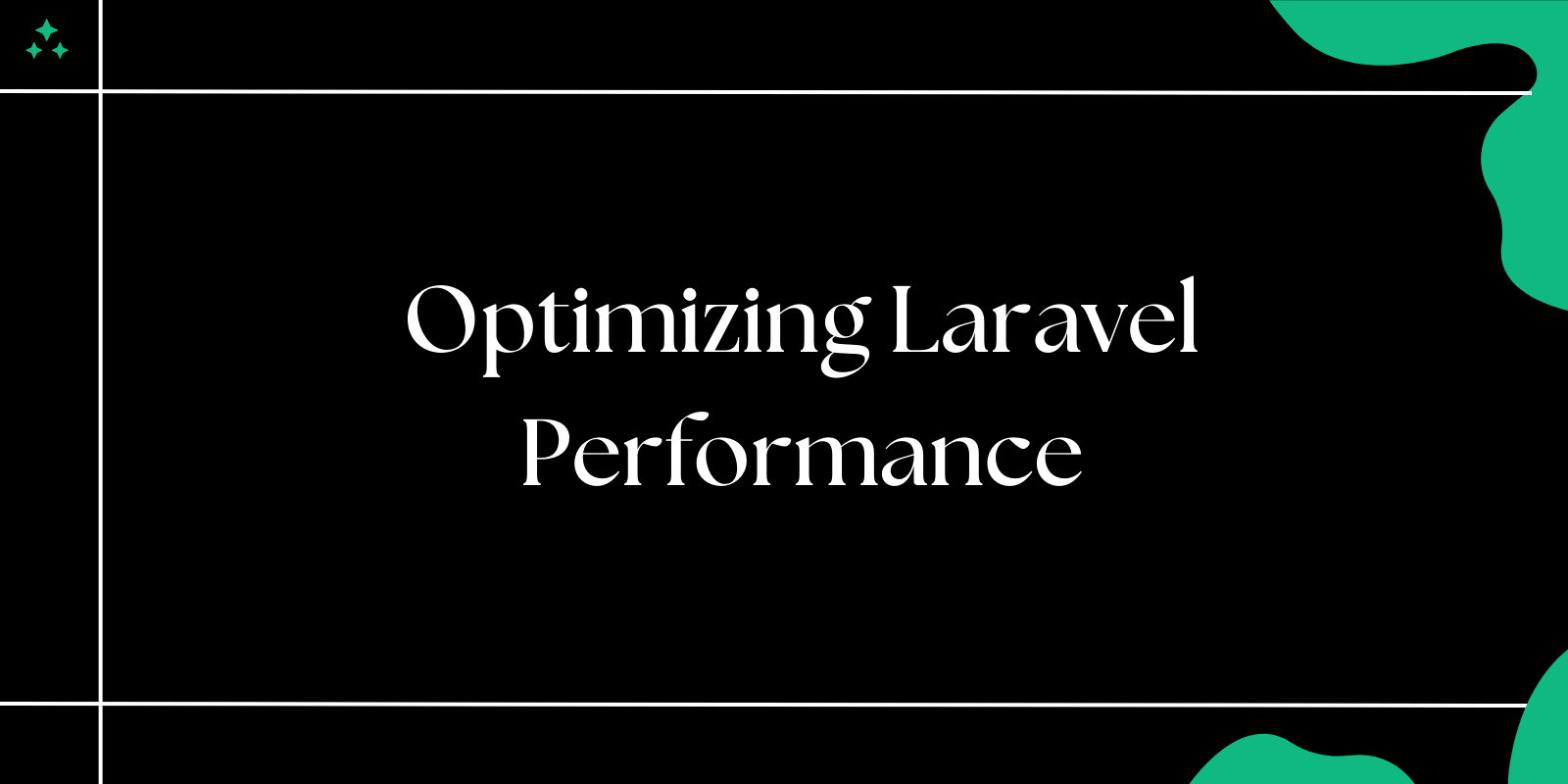Web applications today need to deliver fast and seamless experiences to users. Slow-loading applications can frustrate visitors, leading to higher bounce rates and lower engagement. In the case of e-commerce or SaaS platforms, a delay of just a few seconds can mean lost revenue. Laravel, being a powerful PHP framework, provides numerous tools and best practices to help developers optimize their applications and ensure fast response times.
In this blog, we will explore different strategies to enhance Laravel performance, covering database optimizations, caching techniques, code improvements, and server configurations. Implementing these best practices will not only improve load times but also make your application more scalable and efficient.
Why Performance Optimization is Crucial
Performance optimization in Laravel is critical for maintaining a smooth and responsive user experience. A well-optimized Laravel application leads to:
- Improved User Experience: Faster applications lead to higher user satisfaction, engagement, and retention. A slow application can drive users away, reducing conversions and affecting business growth.
- Reduced Server Load: When Laravel applications handle requests efficiently, they consume fewer resources, reducing strain on the server. This means you can support more users without needing expensive infrastructure upgrades.
- Lower Operational Costs: Efficient applications consume fewer computing resources, allowing businesses to scale without excessive investment in additional server capacity. By reducing the number of database queries, optimizing caching, and fine-tuning configurations, you can cut costs significantly.
- Better SEO Rankings: Page speed is a ranking factor in search engines like Google. Websites that load faster tend to rank higher, leading to increased organic traffic and better visibility in search results.
- Increased Scalability: A highly optimized Laravel application can handle more concurrent users, making it easier to scale as your traffic grows. If an application is not optimized, even minor traffic spikes can lead to slowdowns or downtime.
By implementing performance optimization techniques in Laravel, developers can build web applications that are not only fast but also capable of handling high traffic efficiently. In the upcoming sections, we’ll cover practical methods to optimize Laravel applications for maximum speed and responsiveness.
Here are some actionable tips to get your Laravel app running faster:
1. Use Laravel's Caching System
Laravel’s built-in caching mechanisms help improve application speed by storing frequently used data, reducing database queries, and minimizing repeated computations. Caching allows Laravel to serve content quickly by retrieving pre-processed data instead of executing the same logic repeatedly.
Common Laravel Caching Commands
// Enable route caching for improved performance
php artisan route:cache
// Clear route cache
php artisan route:clear
// Enable config caching
php artisan config:cache
// Clear config cache
php artisan config:clear
- Route Caching (
php artisan route:cache) – Compiles all routes into a single file, significantly reducing the time required to register routes during each request. Ideal for applications with a large number of routes. - Configuration Caching (
php artisan config:cache) – Speeds up Laravel by caching configuration files instead of reading and parsing them on every request. - Clearing Caches (
php artisan route:clear&php artisan config:clear) – Ensures that changes to route files or configurations are applied immediately.
By leveraging caching, Laravel minimizes unnecessary computations, leading to faster response times and a better user experience.
2. Optimize Database Queries
The database is often a bottleneck in application performance. Inefficient queries can slow down response times, increase server load, and degrade user experience. Laravel provides various tools to optimize database performance.
Use Eager Loading to Reduce N+1 Query Issues
The N+1 query problem occurs when the application executes multiple queries instead of a single optimized one. By default, Laravel loads relationships lazily, meaning related data is fetched for each record separately. Eager loading solves this issue by retrieving related records in a single query.
✅ Example: Without Eager Loading (Inefficient Querying)
$users = App\Models\User::all();
foreach ($users as $user) {
echo $user->posts->count();
}
This approach results in one query to fetch users and multiple queries for their posts, leading to unnecessary database load.
✅ Example: With Eager Loading (Optimized Querying)
$users = App\Models\User::with('posts', 'comments')->get();
Now, Laravel fetches users along with their related posts and comments in a single query, significantly improving performance.
Use Database Indexing for Faster Queries
Indexes help the database engine locate records faster instead of scanning the entire table. Adding indexes to frequently searched columns can drastically improve performance.
✅ Example: Adding an Index to a Column in Migration
Schema::table('users', function (Blueprint $table) {
$table->index('email');
});
Now, any query searching by email will run much faster.
Avoid Selecting Unnecessary Data
Fetching large amounts of unnecessary data increases memory usage and slows down responses. Use select() to retrieve only the required columns.
✅ Example: Fetch Only Needed Columns
$users = App\Models\User::select('id', 'name', 'email')->get();
This prevents Laravel from loading all columns, reducing database load and improving efficiency.
By implementing these caching and database optimization techniques, Laravel applications can handle requests faster, reduce server strain, and improve overall performance. Let me know if you need the next section expanded! 🚀
3. Utilize Queues for Time-Consuming Tasks
Handling long-running operations synchronously can slow down an application and negatively impact user experience. Laravel's queue system allows tasks like sending emails, generating reports, and processing files to be handled asynchronously in the background.
Dispatching Jobs to Queues
Instead of executing the task immediately, Laravel pushes it to a queue, allowing the application to return a response faster.
✅ Example: Sending Emails via Queue
use App\Mail\WelcomeEmail;
use Illuminate\Support\Facades\Mail;
Mail::to($user)->send(new WelcomeEmail());
To improve performance further, you can queue the email instead of sending it immediately:
Mail::to($user)->queue(new WelcomeEmail());
This ensures that email processing doesn't delay the request, and users receive a quicker response.
Running Queue Workers in the Background
To process queued jobs, Laravel provides workers that listen for new jobs and execute them asynchronously.
✅ Start a Queue Worker
php artisan queue:work
To ensure the queue worker is always running, use Supervisor on production servers.
✅ Supervisor Configuration Example (/etc/supervisor/conf.d/laravel-worker.conf)
[program:laravel-worker]
process_name=%(program_name)s_%(process_num)02d
command=php /path-to-your-project/artisan queue:work --tries=3
autostart=true
autorestart=true
numprocs=1
redirect_stderr=true
stdout_logfile=/path-to-your-project/storage/logs/worker.log
This configuration ensures Laravel continuously processes queued jobs, improving application responsiveness.
4. Enable OPcache
OPcache significantly speeds up PHP applications by caching precompiled script bytecode in memory. Instead of parsing and compiling PHP scripts on every request, OPcache serves precompiled versions, reducing execution time.
Enable OPcache in php.ini
✅ Edit PHP Configuration
opcache.enable=1
opcache.memory_consumption=128
opcache.max_accelerated_files=10000
opcache.revalidate_freq=0
opcache.enable=1→ Enables OPcacheopcache.memory_consumption=128→ Allocates 128MB of memory for cachingopcache.max_accelerated_files=10000→ Supports caching up to 10,000 PHP filesopcache.revalidate_freq=0→ Ensures cached scripts are never recompiled unless manually cleared
Restart PHP Service
After making changes, restart the PHP service for them to take effect:
sudo systemctl restart php-fpm
✅ Verify OPcache is Enabled
php -i | grep opcache
Enabling OPcache reduces PHP execution time and lowers server resource usage, significantly improving Laravel application performance.
5. Minify and Compress Assets
Reducing the size of CSS, JavaScript, and HTML files improves page load speed and overall performance. Laravel provides Laravel Mix, a powerful tool for asset compilation, bundling, and minification.
Minifying Assets with Laravel Mix
Laravel Mix simplifies front-end build processes. By running the production build command, assets are compiled and minified automatically.
✅ Run the following command to minify CSS and JS:
npm run production
This command:
- Minifies CSS and JavaScript files
- Removes unnecessary characters (whitespace, comments, etc.)
- Optimizes assets for faster loading
✅ Example: Laravel Mix Configuration (webpack.mix.js)
const mix = require('laravel-mix');
mix.js('resources/js/app.js', 'public/js')
.sass('resources/sass/app.scss', 'public/css')
.version();
The .version() method ensures that the browser fetches the latest assets instead of cached ones.
Additional Optimization Tips:
- Enable gzip compression in your web server (Apache/Nginx)
- Use Content Delivery Networks (CDN) for static assets
- Implement lazy loading for images
6. Example Table: Summary of Performance Tips
| Tip | Description |
|---|---|
| Route and Config Caching | Cache routes and configurations for faster load times. |
| Eager Loading | Preload related models to reduce database queries. |
| Use Queues | Handle time-consuming tasks asynchronously via queues. |
| Enable OPcache | Precompile scripts and store them in memory for quick access. |
| Minify Assets | Reduce the size of CSS, JS, and HTML for faster load times. |
7. Use Redis for Caching and Queues
Redis is a high-performance in-memory data store that significantly speeds up Laravel applications by handling caching and queue management efficiently.
Installing Redis in Laravel
First, install the Predis package (if not already installed):
composer require predis/predis
Then, configure Redis as the default cache driver in config/cache.php:
'default' => env('CACHE_DRIVER', 'redis'),
To use Redis for session storage, update config/session.php:
'driver' => env('SESSION_DRIVER', 'redis'),
✅ Caching Queries with Redis
use Illuminate\Support\Facades\Cache;
$users = Cache::remember('users', 60, function () {
return DB::table('users')->get();
});
This caches the query result for 60 minutes, reducing database load.
✅ Configuring Queues with Redis
Update QUEUE_CONNECTION in .env to use Redis for queue management:
QUEUE_CONNECTION=redis
Run the queue worker:
php artisan queue:work redis
Using Redis for caching and queues enhances performance, reducing load times and improving response rates.
8. Database Query Optimization
Database queries often become a bottleneck in Laravel applications. Proper query optimization ensures efficient data retrieval and processing.
✅ Enable Query Logging to Debug Performance Issues
DB::enableQueryLog();
$users = DB::table('users')->get();
$queries = DB::getQueryLog();
dd($queries);
This logs all executed queries, helping identify performance bottlenecks.
✅ Use Laravel Debugbar for Query Profiling
Install Laravel Debugbar:
composer require barryvdh/laravel-debugbar --dev
Enable it in config/app.php:
'providers' => [
Barryvdh\Debugbar\ServiceProvider::class,
],
This displays query execution time, memory usage, and request performance in a debug panel.
✅ Best Practices for Query Optimization
- Use Eager Loading: Reduce N+1 query problems
$users = User::with('posts', 'comments')->get(); - Use Indexing: Add indexes for frequently queried columns
CREATE INDEX idx_users_email ON users(email); - Avoid
SELECT *: Fetch only the required columns$users = DB::table('users')->select('id', 'name')->get();
Conclusion
Laravel offers various built-in features to optimize performance, but it's up to developers to ensure they are properly implemented. From caching strategies to database optimization, applying these tips will help you create a faster and more scalable application.
Remember, performance optimization is not a one-time task-regular monitoring and fine-tuning are necessary to keep your application running smoothly.



